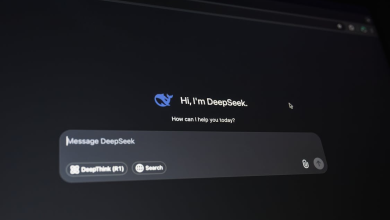
Everyone’s betting on AI. In strategy decks, board meetings, and conference keynotes, it’s the headline grabber, the thing everyone’s convinced will change the game.
And the stakes are only getting higher. Pharma and biotech companies are exploring AI’s potential in everything from medical writing and clinical trial recruitment to commercial targeting and customer engagement. Analysts are forecasting exponential returns. Boards are asking about progress. Investors expect movement.
But within life sciences organizations, there’s often a stark contrast between ambition and reality. Many teams are eager to unlock AI’s potential but are still managing fragmented systems, disjointed data flows, and manual processes. The pressure to adopt AI is real, but so are the obstacles holding back meaningful progress.
The Problem Isn’t AI. It’s Everything Around It.
AI can drive measurable value, improving data accuracy, enabling faster decisions, and reducing manual burden. But the most overlooked truth in the current AI conversation is this: even the most advanced model will fail without the proper foundation.
Many companies are trying to implement AI in environments that simply aren’t ready for it. Core platforms remain disconnected. Data is siloed and inconsistently governed. Teams lack visibility into how decisions are made and how AI will fit into those workflows.
It’s a common trap: teams focus on the tool, not the terrain. A predictive model might be purchased before the business even knows how it will be used, or whether the necessary data is even accessible.
AI doesn’t fix dysfunction. It magnifies it.
If data is unreliable, outputs will be too. If business logic isn’t clearly defined, AI will reinforce inconsistency. And without trust in the process, even the best model won’t be adopted by the people it’s meant to help.
Data Is the Difference
One of the most critical, and underappreciated, factors in AI success is the quality and structure of the data feeding it. AI does not just rely on sheer volume; it depends on consistency, clarity, and context.
Too many initiatives stall because data foundations aren’t in place. Definitions vary across teams. Business hierarchies are fragmented. Source systems aren’t aligned. Duplicate records, missing metadata, and a lack of master data governance are all too common.
In that kind of environment, even the most promising AI use case becomes unreliable. Ask a simple question like “Who’s the primary HCP on this account?” and you might get five different answers depending on the system, the team, or the rep.
Before AI can drive insight, organizations must answer some foundational questions:
- Where does our critical data live?
- How is it structured and governed?
- Can we trust it and trace it?
- Are the right people aligned on what it means?
This foundational work may not be glamorous, but it’s non-negotiable. The real differentiator isn’t access to AI tools, it’s readiness to use them responsibly and effectively.
The Cultural Gap Is Bigger Than the Technical One
AI transformation is not just a technology shift. It’s a cultural one.
In many organizations, AI is still treated as an IT or innovation initiative. It might sit with data scientists or advanced analytics teams, cut off from the day-to-day realities of field operations, marketing, or compliance.
But for AI to succeed, it must be cross-functional from the start. This means getting business leaders involved in defining use cases. It means ensuring compliance teams understand how outputs are generated. It means training field teams not just on the tool, but on how to use AI-supported insights with confidence.
For example, consider a next-best-action recommendation engine. If the field team doesn’t trust the underlying logic, or doesn’t understand the input signals, it won’t matter how good the algorithm is. Adoption will stall and so will impact.
Building trust in AI means:
- Explaining how decisions are made
- Involving end users in the design and testing process
- Establishing feedback loops between AI creators and consumers
The best AI is not just accurate, it’s explainable, auditable, and usable by non-technical stakeholders. That only happens when the culture around it is ready to embrace it.
What AI Readiness Really Looks Like
True AI readiness isn’t about picking the right tool, it’s about laying the right foundation. Here’s how forward-thinking life sciences teams can build durable, scalable AI capability:
- Set Direction from the Top
Start with executive alignment on purpose, acceptable use, and measurable outcomes. Tools only work when they amplify clear priorities. - Formalize Lightweight Governance
Establish a lean, cross-functional group to review use cases, define risk thresholds, and create early-stage processes for data ownership and accountability. - Build the Infrastructure and Guardrails
Focus on clean, connected, and compliant data. Create audit trails, review processes, and embed compliance from day one. - Align, Pilot, and Capture Feedback
Pilot with clear goals and a strong feedback loop. Ensure users understand AI outputs and feel empowered to engage with them. - Operationalize and Evolve
Scale what works, document lessons learned and keep adapting. AI readiness is an ongoing effort and not a one-time launch.
AI readiness isn’t a one-time milestone—it’s an ongoing discipline that separates experimentation from meaningful, scalable impact.
AI Isn’t Going to Slow Down. But Organizations Can Move Smarter.
The pressure to act quickly is real. But speed without direction is risky.
Organizations that succeed with AI won’t necessarily be the first to launch pilots or deploy tools. They’ll be the ones that take the time to get the fundamentals right: trusted data, aligned teams, clearly defined goals, and responsible governance.
The most powerful AI strategies don’t start with models. They begin with questions. What decisions need to be improved? What data is required to inform them? What processes need to evolve?
The organizations that slow down just enough to answer these questions—and act on them—will be the ones best positioned to lead.


